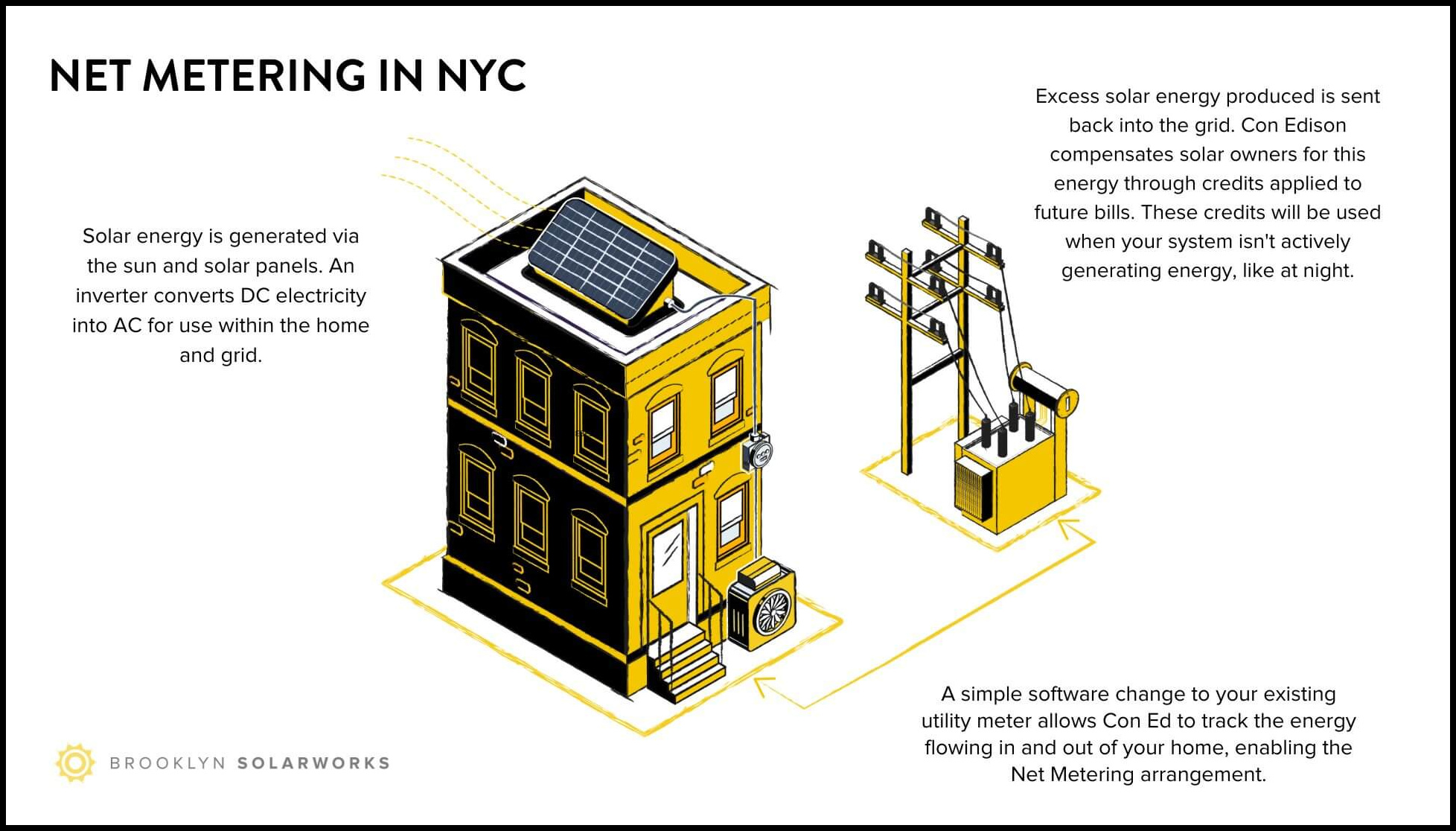Net Metering and Going Solar: Your Home Can Be a Power Source
Legislation changes, so the best time to receive the full financial benefits of solar energy is now.

Photo by Brooklyn SolarWorks
Homeowners with an interest in adopting solar are usually swayed when they learn that their solar-paneled home is its own power-generating entity. Like a smaller version of Con Ed.
How so? Say hello to net metering.
What is net metering?
During the day, your solar system will typically produce more energy than you’re actually using. Where does that energy go?
It feeds back into the grid and can be used for a rainy day — literally. If the sun isn’t shining, your solar panels won’t be generating much power, so you can dip into your reserve. It’s a retail credit of sorts, a billing mechanism, really.

How does net metering work?
Here’s an example of how this would actually work month to month:
In one month, your solar system produced, say, 1,000 kilowatt hours, but your home only needed 500 kWh. Your solar system produced an extra 500 kWh more than what you needed that month.
On your next Con Ed bill, you’ll get credit for those 500 extra kilowatt hours. These will be reflected on your bill under “Net Meter Summary.”
The following month your solar system produces, another 1,000 kWh, but your home uses 1,500 kWh. In this case, you’ll use the 500 kWh that you banked the previous month and you won’t be charged.
The caveat
Remember, the utility company values solar power at the retail rate, which means that as their electric rates rise, so does the value of your solar power.
But here’s the caveat: Be aware that the New York Public Service Commission (NYPSC) and Con Edison have been changing the state’s net metering program and will likely continue to do so in the future.
So, the best time to go solar and receive the full financial benefits is now.
To learn more about the benefits of installing solar or to schedule a consultation, contact Brooklyn SolarWorks.






Comments